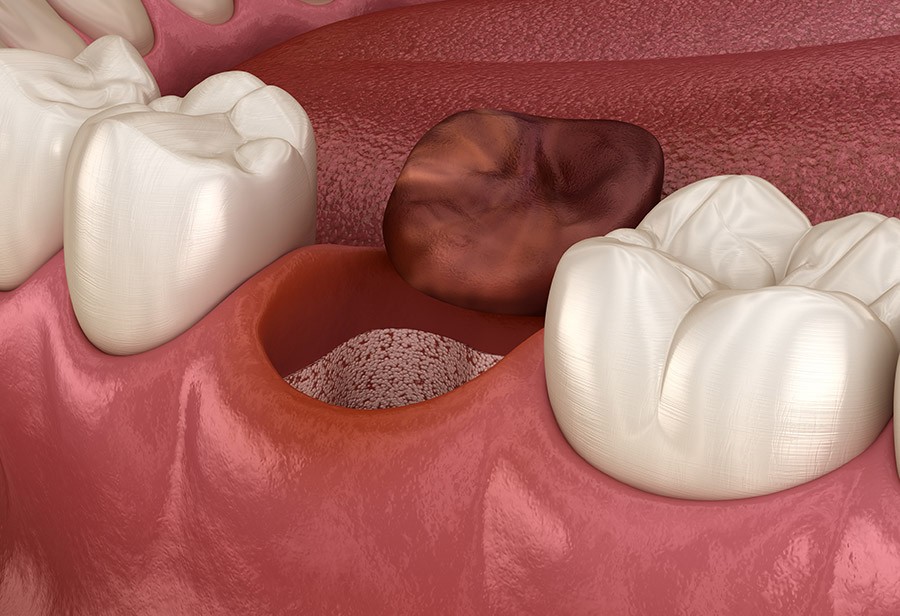Dry Socket Explained, Symptoms and Treatment Options
The explanation of a dry socket is simply a painful condition that might happen after a tooth is extracted. Also known as alveolar osteitis, this is a frequent complication.
When Does It Happen?
Dry socket often manifests three to five days following a tooth extraction. You would start feeling severe pain. This pain can last around two weeks, both with and without getting treatment.
Why Does It Happen?
Once a tooth gets extracted, there will be a blood clot that forms as part of the body's natrual healing response. This clot offers a protective layer over the bone and nerve endings that were previously underneath the removed tooth. The clot also serves as a basis for new soft tissue and bone growth. If that clot forms improperly or is dislodged, then the nerve endings are exposed. This results in fierce pain that you feel. There will also be socket inflammation. Food debris that winds up in the socket can boost the pain.
Specific Causes
Dry socket cases can happen for several different reasons:
- The blood clot might fail to even develop after a tooth extraction
- The empty socket might fall prey to bacterial infection
- The blood clot might dislodge or dissolve prior to healing
- Extraction site trauma might happen due to an impacted tooth
- Smaller jaws might be prone to cysts and infections if the wisdom teeth aren't removed
Risk Factors
Risk factors known to relate to dry sockets also include the following:
- Substandard Oral Hygiene: Not taking care of your oral health while you are healing can mean a dry socket happens.
- Gum/Teeth Infection: An infection close to the extraction site in the form of gum disease or cavities might boose your odds of dry socket.
- Oral Contraceptive Use: High estrogen levels or birth control pills during the process of healing boost your dry socket risk.
- Smoking/Tobacco Use: Cigarettes, tobacco, and nicotine can interrupt or just slow down the process of healing.
- Prior Dry Socket: If you've had one in the past, you have higher odds of developing another one.
Dry Socket Symptoms
In the days immediately following a tooth extraction, watch out for these symptoms of possible dry socket formation:
- Slight fever
- Halitosis
- Bad tastes inside your mouth
- Pain that radiates to the ears, neck, temples, and eyes
- Being physically able to see the socket bone
- Fierce and localized pain around the site of extraction
Prevention and Treatment
As painful as dry sockets are, you want to do all you can to prevent or treat them.
Prevention
Doctors strongly suggest rinsing out your mouth several times per day. Follow all of your aftercare instructions following removal of any teeth. Don't brush the extraction site for the first week, at least, following surgery. During that first week, avoid drinking alcohol, caffeine, carbonated beverages, or anything hot. Also avoid smoking any tobacco products. The first two days, your eating should only include soft foods. Have things like mashed potatoes, smoothies, soup, and scrambled eggs. Don't use straws when drinking anything. These can raise your risks of dry socket formation.
Treatment
If you think you have a dry socket, consult your dentist as quickly as you can. Your dentist can first verify the diagnosis and secondly provide treatment. You might be prescribed antibiotics, but likely only if a verifiable infection is identified at your extraction site. Your dentist's treatment process might follow these steps:
- Your dentist will start by cleaning the dry socket out. This should flush out any bacteria, debris, and food in the extraction site.
- Next, they'll fill your socket using medicated dressing. This acts as a barrier that prevents new debris or food particles from getting into the socket.
- Once the dressing gets placed, you'll have to visit your dentist on a regular basis for frequent changings while your body heals.
- Following the surgery, your dentist might prescribe you an irrigation solution, pain medication, and antibiotics for help with the healing.
- Rinse your mouth several times each day with salt water to flush out food and bacteria. Most retail mouthwashes are simply too harsh for this situation, as alcohol can raise your risk of forming a dry socket.
- Over-the-counter pain relievers, including Ibuprofen might help you.
When to Call for Help
If your pain doesn't get better with pain relievers, or if your breath gets worse, then contact your dentist right away. These can be signs of serious infections taking hold.
In Conclusion
Dry socket issues aren't common knowledge among many people, even among those looking to really take care of their teeth. Prior to making any decisions about this particular issue, contact My Dentist in Los Angeles for a consultation where you can learn more.
By accepting you will be accessing a service provided by a third-party external to https://www.mydentistinlosangeles.com/

